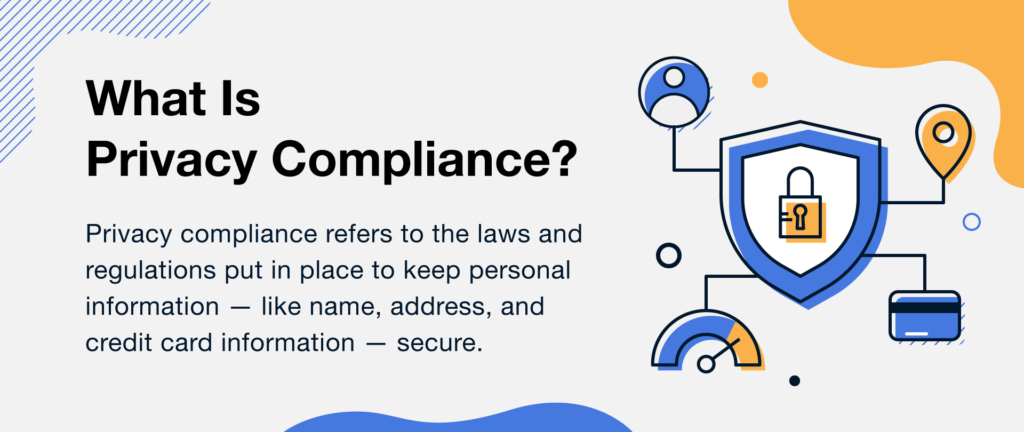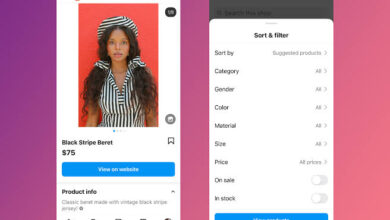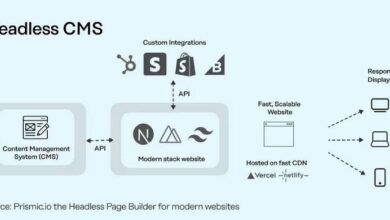What Makes a Website Privacy-compliant in 2025?

Let’s face it: these days, almost everything we do is online. We shop, chat, learn, and even work on the internet. But have you ever stopped to think about how much personal information you’re sharing every time you visit a website? It’s a lot! Websites today collect all sorts of data, your name, email, what you click on, where you’re from, and sometimes even your location.
With so much data floating around, it’s no surprise that people are getting more worried about their privacy. That’s where the idea of privacy compliance comes in. In simple terms, privacy compliance means making sure a website handles your personal information safely, legally, and respectfully. It’s about following the rules and being honest with users about what’s happening with their data.
Now, why is privacy such a big deal? Well, technology is moving faster than ever. New gadgets, smarter websites, and even artificial intelligence are popping up everywhere. At the same time, governments are introducing tougher privacy laws to protect people like you and me. If a website doesn’t play by the rules, it can get into serious trouble, think huge fines or even being shut down.
So, what makes a website privacy-compliant? That’s exactly what we’re going to talk about in this article. Whether you run a website, work for a company, or just want to know how your data is being used, this guide will break it all down in plain English. We’ll look at the main rules, what websites need to do, common mistakes to avoid, and why being privacy-complaint is actually good for business.
What is Website Privacy-Compliance?
To put it simply, website privacy compliance means a website is following the laws and best practices for handling people’s personal information. This covers everything from asking for permission before collecting data, to explaining what they’re doing with your info, to making sure it’s stored safely.

Think of it like this: if you lend someone your phone, you expect them not to snoop through your photos or messages, right? Privacy compliance is about websites showing that same respect for your data.
Read Next: 5 Micro Influencer Strategies for Fashion Startups
Core Principles of Privacy-Compliant Websites
Before we get into the nitty-gritty, let’s talk about the main ideas behind privacy compliance. These are the “golden rules” every website should follow to keep your data safe and respect your privacy.
Data Minimization
Only Collect What’s Needed: Websites shouldn’t ask for more information than they really need. If you’re signing up for a newsletter, they probably just need your email, not your birthday, address, or phone number. The less data they collect, the less risk there is if something goes wrong.
Don’t Keep Data Forever: Websites should only hold onto your data as long as they actually need it. If you unsubscribe from a newsletter, your email should be deleted soon after, not kept forever just in case.
Transparency and Consent
Be Honest About Data Collection: Websites should clearly tell you what data they’re collecting and why. No sneaky fine print or confusing language.
Get Clear Permission: You should have to actively agree to your data being collected, like clicking “I agree” or checking a box. It shouldn’t be hidden or already ticked for you.
Easy to Change Your Mind: If you decide you don’t want your data collected anymore, it should be simple to withdraw your consent. Maybe there’s an unsubscribe link or a way to update your preferences.
User Rights (Data Subject Access Requests – DSARs)
Modern privacy laws give you certain rights over your data:
- Right to Access: You can ask a website what information they have about you.
- Right to Correct: If something’s wrong, you can ask them to fix it.
- Right to Delete: You can ask them to erase your data (sometimes called the “right to be forgotten”).
- Right to Take Your Data Elsewhere: You can request a copy of your data to use with another service.
Strong Security Measures
Keep Data Safe: Websites need to protect your information from hackers and leaks. This means using things like encryption (which scrambles your data so only the right people can read it) and secure connections (look for “https” in the web address).
Regular Security Checks: It’s not enough to set up security once and forget about it. Websites should regularly check their systems for weaknesses and fix any problems they find.
Careful Third-Party Sharing
Check Their Partners: If a website shares your data with another company (like for payment processing or ads), they need to make sure those companies are also following privacy rules.
Have Agreements in Place: There should be clear contracts that explain how your data will be used and protected by these third parties.
Read Next: Best AI Tools for Small Business Marketing in 2025
Key Privacy Regulations in 2025
Now, let’s talk about the main privacy laws websites need to follow in 2025. These rules are getting stricter every year, and more countries are creating their own versions.
GDPR (General Data Protection Regulation) – Europe
Who It Applies To: GDPR (General Data Protection Regulation) applies to any website that collects data from people in the European Union, even if the business is based elsewhere.
Main Rules: Get clear consent, respect user rights, have a data protection officer if needed, and keep data safe.
Penalties: Fines can be massive, up to 20 million euros or 4% of a company’s global revenue.
CCPA/CPRA – California, USA
Who It Applies To: CCPA/CPRA applies to websites that collect data from California residents and meet certain business size or data volume thresholds.
Main Rules: Let people know what data you collect, allow them to delete it, and give them the option to say “no” to selling their data.
Other Countries
More and more countries are making their own privacy laws, like Brazil’s LGPD and Canada’s PIPEDA. In the US, 18 states now have privacy laws, and more are on the way. This means websites need to keep up with a patchwork of different rules depending on where their users live.
Practical Steps for Website Compliance
So, what should a website actually do to be privacy-compliant in 2025? Here are the key steps, explained simply:
1. Write a Clear Privacy Policy
What to Include: Be upfront about what data you collect, why you collect it, who you share it with, and how users can control their data.
Make It Easy to Find: Put a link to your privacy policy on every page, usually in the footer.
2. Use Proper Cookie Consent Banners
Ask for Permission First: Don’t set tracking cookies until the user says it’s okay.
Let Users Choose: Give options, maybe someone wants only necessary cookies, not marketing ones.
Easy to Change: Users should be able to update their cookie choices anytime.
3. Encrypt Data
Use HTTPS: This protects data as it travels between your website and the user’s device.
Encrypt Stored Data: Even if someone hacks into your database, encrypted data is much harder to steal.
4. Do Regular Data Audits
Know What You Have: Keep track of what data you collect, where it’s stored, and who has access.
Assess Risks: Before launching new features, check if they could put user privacy at risk.
5. Train Your Team
Make Sure Everyone Knows the Rules: Even one mistake can cause a data breach.
Teach Staff How to Handle Data Requests: Responding to user requests quickly and correctly is key.
Read Next: How to Create a Brand Kit Using Canva AI
Common Pitfalls to Avoid
Even with good intentions, websites can still mess up. Here are some common mistakes to avoid:
Vague or Outdated Privacy Policies: Don’t use a generic template or forget to update your policy when things change.
Ignoring User Requests: Not responding to people who want to access or delete their data is a big no-no.
Collecting Too Much Data: Only ask for what you really need.
Weak Security: Don’t leave the door open for hackers.
Unvetted Third-Party Tools: Make sure any tools or partners you use also follow privacy rules.
The Benefits of Being Privacy-Compliant
You might be thinking, “All these rules sound like a lot of work!” But there are real benefits to getting privacy right:
Builds Trust: People are more likely to use your website if they know their data is safe.
Avoids Fines: Breaking privacy laws can cost a fortune.
Boosts Your Reputation: Being seen as a responsible business is great for your brand.
Gives You an Edge: In a crowded market, privacy can set you apart from competitors.
Read Next: How to Create a Short Video Marketing Strategy for Local Businesses
Conclusion
So, what makes a website privacy-compliant? It’s about respecting people’s data, being honest, following the law, and keeping information safe. This isn’t a one-time thing, it’s an ongoing job that needs regular attention. As technology changes and new laws come in, websites have to keep up.
If you’re running a website, start with the basics: collect only what you need, be clear and open, protect the data, and make it easy for users to control their information. Not only will you stay out of trouble, but you’ll also earn the trust and loyalty of your users.
Privacy isn’t just a legal requirement, it’s a smart way to do business in the digital age.
Frequently Asked Questions
1. Do small websites need to worry about privacy compliance?
Yes. Even if your website is small, if you collect personal data or have visitors from places with privacy laws (like the EU or California), you need to follow the rules.
2. What happens if I ignore a user’s request to see or delete their data?
You could get into legal trouble and face fines. Always respond to these requests quickly and honestly.
3. Can I use Google Analytics or Facebook Pixel and still be compliant?
Yes, but you must get clear permission from users before setting these tracking cookies, and you need to explain what data is being collected.
4. How often should I update my privacy policy?
At least once a year, or whenever you change how you collect or use data. It’s better to update too often than not enough!
If you remember one thing from this article, let it be this: Privacy compliance is about treating people’s data the way you’d want your own to be treated, safely, honestly, and with respect. That’s what makes a website privacy-compliant.



